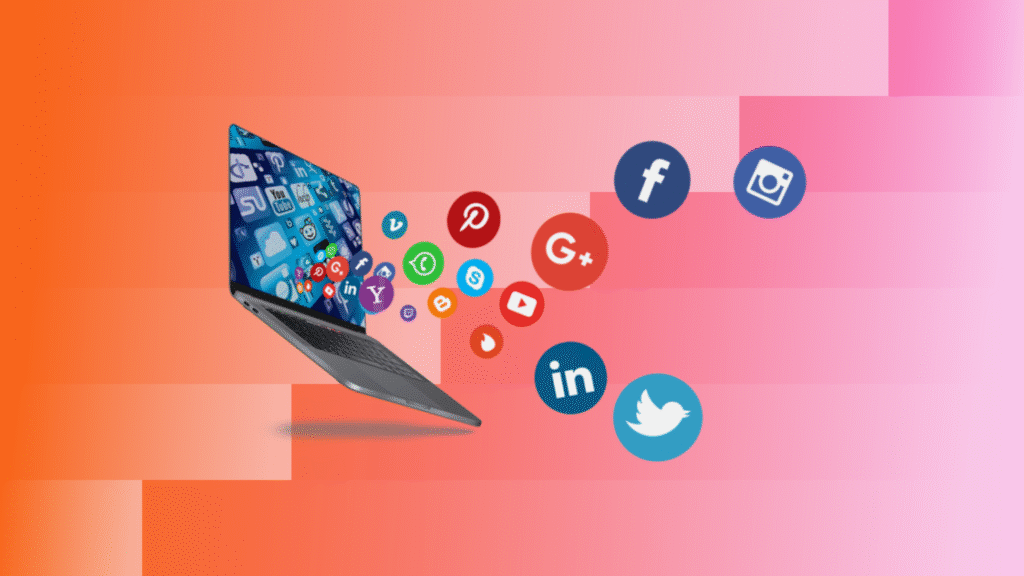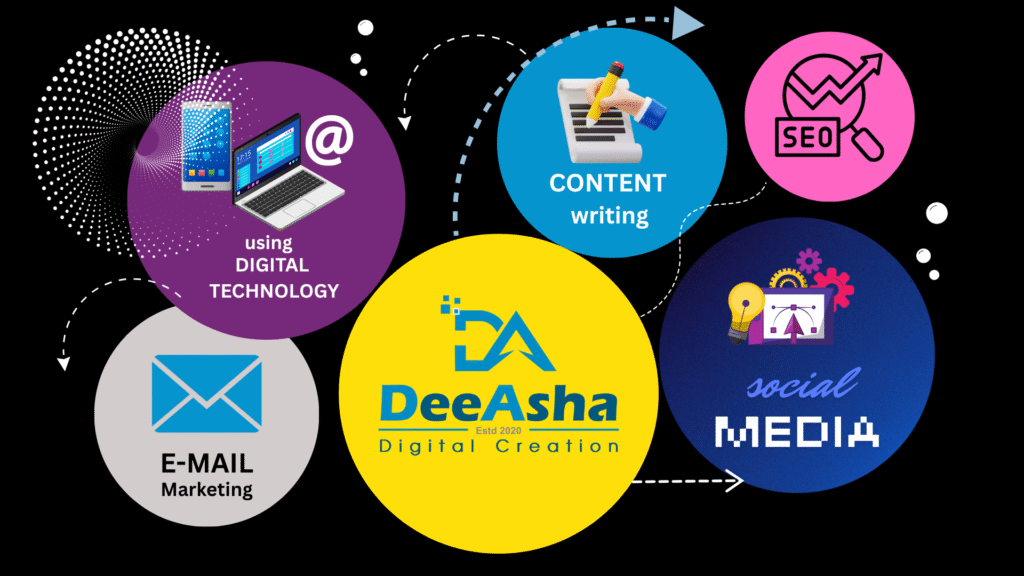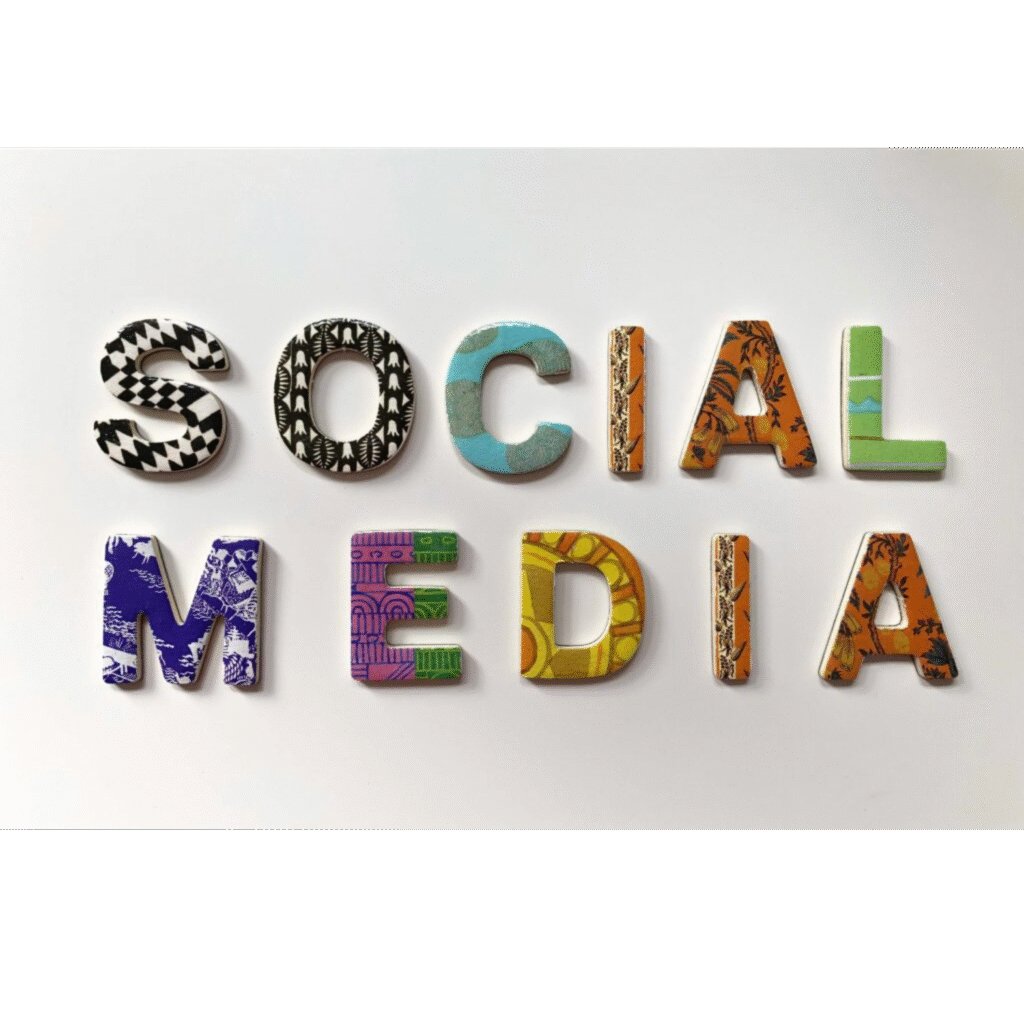

SOCIAL MEDIA
Social media refers to online platforms and applications where users create, share, and engage with content in real time. Popular platforms include Facebook, Instagram, LinkedIn, YouTube, Twitter (X), Pinterest, and more.
For businesses, social media serves as a powerful tool to:
Build brand awareness
Connect with target audiences
Share valuable content
Drive traffic and leads
Build communities and trust
How Social Media Works in Organic Marketing
Organic social media marketing refers to using free tools and content to grow your audience and engagement without paid promotions.
Key Activities
- Creating engaging posts (images, videos, blogs, info graphics)
- Using hashtags and location tags
- Responding to comments and messages
- Posting stories, reels, and going live
- Building a loyal following through consistency and value
Goals:
- Build brand awareness and trust
- Educate and inform your audience
- Increase engagement (likes, shares, saves, comments)
- Grow long-term relationships with followers
Pros:
- No cost to publish content
- Builds credibility and trust over time
- Ideal for community engagement
Organic vs Paid – Combined Strategy
Organic builds trust over time, and helps engage your loyal audience.
Paid helps scale quickly and target new, cold audiences.
Together, they create a powerful digital marketing ecosystem—where organic builds relationships and paid accelerates reach and conversions.

How Social Media Works in Paid Marketing
Paid social media marketing refers to running advertisements on platforms to reach a wider or more targeted audience.
✔Key Features
Creating ad campaigns (brand awareness, lead generation, sales)
Choosing objectives (traffic, engagement, conversions)
Defining target audiences (age, gender, location, interests)
Setting budgets and ad schedules
Monitoring and optimizing ad performance
✔ Goals:
Rapidly increase reach and visibility
Drive website traffic and conversions
Generate leads and sales
Retarget existing visitors
✔ Pros:
Fast and scalable results
Advanced targeting and analytics
Useful for launching new products or campaigns
Fueling Local and Global Economic Growth
Social media doesn’t just help individual brands – it transforms economies too. On a global scale, social platforms lower the barrier to new markets. One analysis notes that “two-thirds of the world’s purchasing power is found outside our borders,” and social media lets even the smallest companies “grab a piece of the global pie”venuez.dk. By going online, local shops can reach international customers, join global supply chains, or franchise abroad without huge investment venuez.dk. Even government trade agencies use social campaigns to spur growth: the U.S. Trade and Development Agency (USTDA) credits a social media push with tripling energy project proposals from African partners, linking U.S. companies to new markets granicus.com. These digital connections drive exports and investment, which in turn create jobs and spur development. For example, USTDA’s mission is to help companies create jobs through exports, and they find social media “a particularly beneficial tool” for achieving that goal granicus.com.
Social media also strengthens local economies. Platforms like Facebook and Instagram help neighborhood businesses reach nearby customers. Local community groups, hyper-targeted ads, and check-in features spread the word about stores and services in a city. In fact, experts note that Facebook is especially “useful for community-building and local awareness” for businesses serving specific areas business.com. When neighbors see positive reviews or special offers on their feeds, they’re more likely to buy locally, keeping money circulating in the community. By amplifying word-of-mouth online, social media helps local shops and restaurants attract foot traffic, support local jobs, and reinforce a vibrant local economy
Lowering Costs and Boosting Efficiency
Social media marketing is remarkably cost-effective. Unlike traditional advertising, creating a post or video for platforms like Instagram or face book can be done for little to no media budget. As one expert puts it, social marketing “doesn’t have to cost you anything but time”business.com. Simply posting on social channels can reach thousands of potential customers for free business.com. Even when businesses do pay for advertising, social ads tend to be cheaper and more targeted than TV, print or billboard campaigns. For example, one company cut its lead-acquisition costs by 40% by using narrowly targeted Facebook ads instead of broader methods venuez.dk. Industry surveys back this up: over half of marketing leaders expect clear “cost savings” from their social media efforts sproutsocial.com.
These savings extend beyond just ad budgets. Social media tools can streamline operations and customer service. Quick responses to customer questions on Twitter or Facebook Messenger often avoid the need for expensive call centers. Analytics from social platforms let businesses focus their limited resources on what’s working – for instance, promoting posts that get more clicks or engagement. Even design work can be cheaper: user-friendly tools like Canva make it easy for business owners to create professional social graphics themselves, avoiding designer fees. In sum, social media lets businesses achieve more for less – expanding reach and engagement without blowing the budget.
Sources: Research and industry reports have repeatedly shown that social media drives brand awareness, leads, and sales while reducing marketing costs. For example, Adobe and Business.com articles document how social campaigns build trust and revenue business.adobe.combusiness.com. Likewise, Sprout Social and other data sources highlight the efficiency and ROI of social marketing sproutsocial.com. Government and industry studies illustrate social media’s role in job creation and trade granicus.comvenuez.dk. All facts above are drawn from these expert sources.